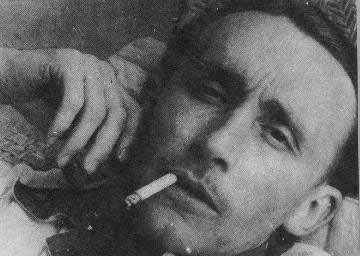
This is the eighth in a series of essays in honor of André Bazin.
Susan Barry was born with slightly misaligned eyes, which couldn't both be focused on the same object. As is common for people with this condition, “normal” vision produced an image in which objects situated in different spaces were superimposed on each other, and distant objects seemed to vibrate. So her brain, as is also common, learned to disregard the image from one eye, for greater clarity. But this meant that she could not see in stereo, in three dimensions — she could not perceive the spatial relationships between things, except by inference.
In her 48th year she trained herself to focus both eyes on the same objects — something that was previously thought by medical science to be impossible. Suddenly she could see in three dimensions. It's wonderful to hear her talk about the joy of this. Before, she had seen falling snow as a flat screen of moving white dots, the branches and leaves of trees as a flat pattern of shapes. Now, she says, she can see the “palpable spaces” in depth between the snowflakes, between the branches and the leaves.
It's an interesting choice of words, since palpable meant originally something that can be physically touched. It comes from the Latin word palpare, to stroke, and has the same root as palpation — now mostly a medical term for a doctor's examination of a patient by touch. (It can be used aesthetically, as well, as in “the beauty of the female breast is best appreciated by palpation.”) You can't physically touch the spaces between things, of course, but Barry was using the word palpable correctly, since it is now often used figuratively for anything that is obvious, readily perceived.
And yet . . . there is something “palpable”, in the original sense, about space. If you close your eyes and move your hand between two objects, it's the absence of feeling something you can touch that tells you how far apart they are. This is a kind of “negative touch”. And if you close your eyes and try to navigate around, the absence of objects that can be touched tells you where you can safely go. Empty space always has the potential to be filled, occupied, by something that can be touched.
You can think of space as the kind of mold used in casting an object out of bronze or plastic. The mold receives the impression of the model, which is then removed, leaving a negative space. The mold is next filled with the material to be cast, and when it hardens the mold is removed, leaving the cast object. The mold is a kind of negative (solid, palpable) impression of the space around the new object.
In practice, we think of objects and the space around them as both “palpable”, since they both deliver the same kind of information to us about the physical world. We take this “palpability” of space for granted, see it as emptiness, just as we throw away a casting mold when we've made what we want from it. But Susan Barry's joy at “palpable” space reminds us of what a wonder it is — perhaps reminds us of our joy as infants in learning to use the “palpability” of space as a prime way of understanding and navigating the world around us.
It seems to me that paintings and photographs which convincingly convey the illusion of space, and all the plastic arts, from dance to architecture, which celebrate the wonders of “palpable space”, work in large part by reprising and tapping into the joy of these first discoveries — reminding us of the beauty of a spatial palpability we come to take for granted in the course of time, but which Susan Barry had never learned to take for granted.
Movies are the art most wired into this beauty, the beauty of spaces. Movies are flat images, but when people and objects move through the spaces depicted on screen, or when the camera moves through those spaces, the wondrous palpability of space is reborn for us. At the end of his life, D. W. Griffith lamented that movies, in the post silent-film era, had lost touch with this beauty, the beauty, he said, of leaves rustling in the breeze. And it is the beauty of leaves rustling in the breeze, along with snowflakes, that Susan Barry cites as the things she most enjoys now that she can see in stereo.
Griffith didn't mean, of course, that there should be more trees in movies. He meant that movies needed to reconnect with the phenomenon out of which their fundamental magic arises.
[Susan Barry's book about her recovery of stereo vision, Fixing My Gaze, has just come out in paperback, and Oliver Sacks devotes a chapter to her case in his forthcoming book The Mind's Eye.]
